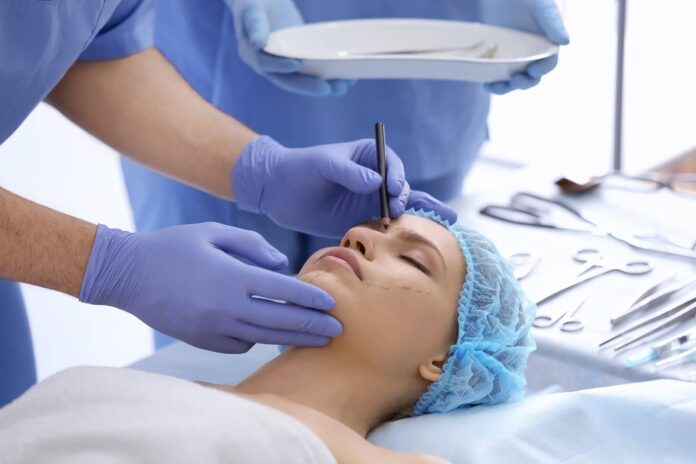Rhinoplasty, also known as a nose reshaping procedure, has evolved into a refined surgical art that not only enhances facial aesthetics but also improves nasal functionality. In recent years, the integration of Platelet-Rich Plasma (PRP) therapy has significantly increased interest among surgeons and patients alike, especially those seeking improved healing, reduced downtime, and enhanced aesthetic outcomes. PRP, derived from the patient’s own blood, works synergistically with the surgical process to support tissue regeneration and improve overall surgical results. This innovative combination is gaining popularity in high-end aesthetic clinics around the world, especially for patients opting for Rhinoplasty Dubai.
Understanding Rhinoplasty: A Refined Aesthetic Approach
Rhinoplasty is a delicate surgical procedure performed to alter the shape, structure, or function of the nose. The operation may address aesthetic concerns such as nasal asymmetry, humps, or a bulbous tip, as well as functional issues including breathing difficulties. Today’s advanced rhinoplasty techniques focus on precision, symmetry, and natural-looking results.

What is PRP and Why Is It Used in Rhinoplasty?
Platelet-Rich Plasma (PRP) is a concentration of platelets extracted from the patient’s own blood. This rich plasma contains essential growth factors that support cell regeneration and tissue healing. In the context of rhinoplasty, PRP serves multiple benefits when applied strategically during or after surgery.
Surgeons use PRP to:
- Enhance tissue healing
- Reduce post-operative bruising and swelling
- Improve skin quality and vascular regeneration
- Minimize scar formation
- Shorten the overall recovery time
Because PRP is autologous (sourced from the patient’s own body), it eliminates the risk of allergic reactions, making it a safe, biologically compatible addition to the rhinoplasty process.
How PRP Enhances the Rhinoplasty Procedure
During rhinoplasty, PRP is often injected into specific areas around the surgical site, or applied topically to support tissue regeneration. The high concentration of growth factors accelerates healing and strengthens soft tissue integration. This enhances the surgeon’s work by:
- Promoting rapid tissue repair in cartilage and soft tissues
- Supporting better contouring and shaping of the nasal framework
- Reducing inflammation, leading to quicker visible results
This dual-action effect makes PRP a valuable addition, especially in cases where tissue healing is crucial for the success and longevity of the results
The Success Rate of Rhinoplasty with PRP Integration
The success rate of rhinoplasty is traditionally measured through patient satisfaction, functionality improvement, and complication avoidance. When enhanced with PRP, the procedure has demonstrated even higher satisfaction rates due to improved healing and reduced recovery complications.
Clinical observations and case studies indicate:
- Success rates of 90% to 95% when PRP is integrated with traditional rhinoplasty techniques
- Faster healing in 7 out of 10 cases, especially concerning bruising and swelling
- Reduced incidence of secondary surgeries due to improved initial tissue integration
Success is not solely based on aesthetic perfection but also on breathing improvement and absence of long-term complications. When PRP is incorporated, these metrics are positively influenced, particularly in complex revision or reconstructive rhinoplasties.
Ideal Candidates for Rhinoplasty with PRP
Doctors typically recommend PRP-enhanced rhinoplasty for:
- Patients undergoing primary or secondary rhinoplasty
- Individuals with thin or sensitive skin needing quicker recovery
- Those requiring reconstructive nasal surgery post-trauma
- Patients prone to scarring or delayed healing
Surgeons assess the patient’s anatomy, goals, and health profile before combining PRP with rhinoplasty. This personalized approach ensures that the treatment aligns with the patient’s unique healing capacity and aesthetic desires
Treatment Process Performed by Expert Surgeons
The surgical process with PRP follows a precise and controlled sequence to ensure the highest standard of care:
Benefits of PRP-Enhanced Rhinoplasty
Integrating PRP into rhinoplasty offers a wide array of benefits for both the patient and the surgeon:
- Faster Recovery: PRP significantly reduces downtime by promoting quicker tissue repair.
- Enhanced Healing: Growth factors help rebuild tissues more efficiently, reducing bruising and swelling.
- Improved Skin Texture: Particularly beneficial for patients with thin or damaged skin around the nose.
- Reduced Scar Formation: PRP minimizes the visibility of incisions, especially in open rhinoplasty.
- Lower Revision Rates: Enhanced initial healing often leads to more stable, long-term results.
- Biocompatible and Safe: As PRP is derived from the patient’s blood, it avoids risks associated with synthetic substances.
These advantages collectively contribute to the high satisfaction rates observed among patients undergoing PRP-assisted rhinoplasty.
Post-Operative Results and Long-Term Stability
The long-term outcome of rhinoplasty with PRP is often superior due to improved healing during the critical post-surgical phase. Patients typically experience:
- Faster resolution of swelling (within 2–3 weeks versus 4–6 weeks traditionally)
- More defined nasal contours emerging earlier in recovery
- Sustained aesthetic improvements up to 12 months and beyond
The use of PRP allows the nasal tissues to recover more naturally, with less trauma and prolonged edema, which contributes to the overall surgical success.
Why Top Surgeons Choose PRP-Assisted Rhinoplasty
Experienced facial plastic surgeons prefer integrating PRP with rhinoplasty for several reasons:
- It enhances precision and surgical control
- Reduces the likelihood of post-operative complications
- Provides a smoother post-surgical journey for the patient
- Aligns with modern regenerative medicine techniques for aesthetic procedures
In high-standard aesthetic clinics, PRP has become part of a comprehensive rhinoplasty protocol, especially when delivering premium results is the priority.
Conclusion
The combination of rhinoplasty with PRP represents a cutting-edge approach in modern aesthetic surgery. With clinical success rates nearing 95%, accelerated healing, and visibly improved results, PRP has become a valuable adjunct in nasal reshaping procedures. Whether for functional correction or cosmetic enhancement, this regenerative addition plays a vital role in ensuring patient satisfaction and surgical excellence. For individuals seeking refined outcomes with minimal downtime, PRP-assisted Rhinoplasty is a superior and reliable choice.































